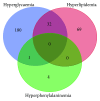Supplementation of Micronutrient Selenium in Metabolic Diseases: Its Role as an Antioxidant
- PMID: 29441149
- PMCID: PMC5758946
- DOI: 10.1155/2017/7478523
Supplementation of Micronutrient Selenium in Metabolic Diseases: Its Role as an Antioxidant
Abstract
Selenium is an essential mineral naturally found in soil, water, and some of the food. As an antioxidant, it is one of the necessary trace elements in human body and has been suggested as a dietary supplement for health benefit. Although the human body only needs a trace amount of selenium every day, plenty of recent studies have revealed that selenium is indispensable for maintaining normal functions of metabolism. In this study, we reviewed the antioxidant role of nutritional supplementation of selenium in the management of major chronic metabolic disorders, including hyperlipidaemia, hyperglycaemia, and hyperphenylalaninemia. Clinical significance of selenium deficiency in chronic metabolic diseases was elaborated, while clinical and experimental observations of dietary supplementation of selenium in treating chronic metabolic diseases, such as diabetes, arteriosclerosis, and phenylketonuria, were summarized. Toxicity and recommended dose of selenium were discussed. The mechanism of action was also proposed via inspecting the interaction of molecular networks and predicting target protein such as xanthine dehydrogenase in various diseases. Future direction in studying the role of selenium in metabolic disorders was also highlighted. In conclusion, highlighting the beneficial role of selenium in this review would advance our knowledge of the dietary management of chronic metabolic diseases.
Figures

References
Publication types
MeSH terms
Substances
LinkOut - more resources
Full Text Sources
Other Literature Sources
Medical
Research Materials

